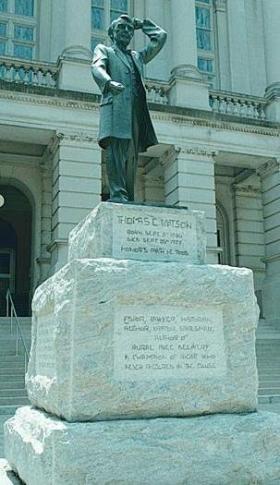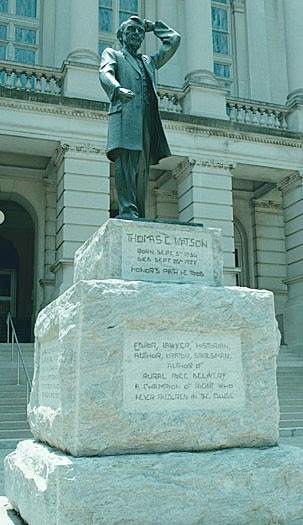The statue of controversial politician and publisher Thomas Watson is being moved from the front of the Georgia Capitol to a plaza across the street.
The statue’s removal came after an executive order from Governor Nathan Deal and is being cheered by many critics. Those who advocated for its removal say it was needed because Watson was a racist and his writings stirred up anti-Semitism ahead of the 1915 lynching of Jewish businessman Leo Frank. Frank was convicted of killing 13-year-old Mary Phagan, an employee of the Atlanta pencil factory he managed. WABE spoke with several historical experts to get their opinions.
============================
Early in his public life, Watson fought for both poor blacks and whites. But Watson later championed white supremacy and expressed anti-Catholic and anti-Semitic rhetoric. Steve Oney is the author of what many consider to be the definitive book on the Leo Frank case. Oney says despite Watson’s controversial legacy he’s opposed to moving the statue.
“The South has many dark places, and our job is to deal with those places not to cover them up and not to move them aside.”

9(MDAxODM0MDY4MDEyMTY4NDA3MzI3YjkzMw004))








